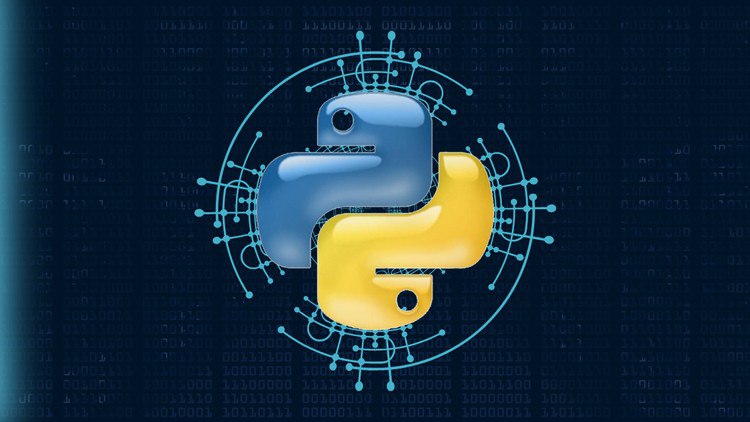Python Programming: A Step-by-Step Programming Course
Outline
- Introduction to Python Programming
- Overview of Python
- Importance of Python in modern development
- Setting Up the Python Environment
- Installing Python
- Introduction to IDEs (Integrated Development Environments)
- Basic Syntax and Output
- Writing your first Python program
- Understanding the Python shell and script mode
- Working with Variables and Data Types
- Defining variables
- Understanding data types (numbers, strings, booleans)
- Operators in Python
- Arithmetic operators
- Comparison and logical operators
- Control Flow Statements
- If…else statements
- Loops (for and while)
- Functions in Python
- Defining and calling functions
- Understanding local and global variables
- Data Structures in Python
- Lists: Creating and manipulating lists
- Tuples: Understanding and using tuples
- Sets: Understanding sets and their operations
- String Operations
- Basic string operations
- String methods
- File Handling
- Opening, reading, and writing to files
- Working with CSV and JSON files
- Exception Handling
- Using try, except, and finally blocks
- Best practices for error handling
- Object-Oriented Programming
- Classes and objects
- Inheritance and encapsulation
- Libraries and Frameworks
- Introduction to popular libraries (NumPy, pandas, matplotlib)
- Overview of web development frameworks (Flask, Django)
- Real World Projects
- Building simple scripts
- Developing complex applications
- Best Practices in Python Programming
- Version control with Git
- Writing unit tests
- Coding standards and maintainability
Article
Introduction to Python Programming
Python is a versatile and powerful programming language that has become a staple in various fields, from web development to data science. Known for its readability and simplicity, Python allows developers to write clear and concise code, making it an ideal choice for beginners and professionals alike. Whether you’re looking to automate tasks, analyze data, or develop applications, Python provides the tools you need to succeed.
Setting Up the Python Environment
Installing Python
Before you can start coding in Python, you need to install it on your computer. Head over to the official Python website and download the latest version. Follow the installation instructions to set up Python on your system.
Introduction to IDEs (Integrated Development Environments)
An Integrated Development Environment (IDE) can greatly enhance your programming experience. Popular Python IDEs include PyCharm, Visual Studio Code, and Jupyter Notebook. These tools provide features like code completion, debugging, and project management to streamline your development process.
Basic Syntax and Output
Writing Your First Python Program
Let’s start with a classic: “Hello, World!”. This simple program introduces you to Python’s basic syntax.
print("Hello, World!")Running this code in your Python environment will display the message “Hello, World!” on the screen. This basic example demonstrates how easy it is to get started with Python.
Understanding the Python Shell and Script Mode
Python offers two main ways to execute code: the interactive shell and script mode. The interactive shell allows you to enter and run code one line at a time, making it perfect for testing small snippets. Script mode, on the other hand, lets you write and execute entire programs saved in .py files.
Working with Variables and Data Types
Defining Variables
In Python, variables are used to store data. You can create a variable by simply assigning a value to it.
name = "Alice"
age = 30
is_student = TrueUnderstanding Data Types
Python supports several data types, including numbers, strings, and booleans. Each type serves a different purpose and comes with its own set of operations.
- Numbers: Integers (
int) and floating-point numbers (float) - Strings: Text data enclosed in quotes
- Booleans:
TrueorFalsevalues
Operators in Python
Arithmetic Operators
Arithmetic operators perform basic mathematical operations. Examples include addition (+), subtraction (-), multiplication (*), and division (/).
a = 10
b = 5
print(a + b) # Output: 15
print(a - b) # Output: 5Comparison and Logical Operators
Comparison operators (e.g., ==, !=, >, <) compare values, while logical operators (and, or, not) combine boolean expressions.
x = 10
y = 20
print(x > y) # Output: False
print(x < y and y == 20) # Output: TrueControl Flow Statements
If…Else Statements
Control flow statements determine the execution path based on conditions. The if...else statement allows you to execute different code blocks based on a condition.
temperature = 75
if temperature > 80:
print("It's hot outside!")
else:
print("It's not that hot.")Loops (For and While)
Loops are used to repeat a block of code multiple times. The for loop iterates over a sequence, while the while loop repeats as long as a condition is true.
for i in range(5):
print(i)
count = 0
while count < 5:
print(count)
count += 1Functions in Python
Defining and Calling Functions
Functions are reusable blocks of code that perform specific tasks. Define a function using the def keyword, and call it by its name.
def greet(name):
print(f"Hello, {name}!")
greet("Alice")Understanding Local and Global Variables
Variables defined inside a function are local to that function. Global variables are accessible throughout the entire program.
global_var = "I am global"
def my_function():
local_var = "I am local"
print(global_var)
print(local_var)
my_function()Data Structures in Python
Lists: Creating and Manipulating Lists
Lists are ordered collections of items. They are mutable, meaning you can change their contents.
fruits = ["apple", "banana", "cherry"]
fruits.append("date")
print(fruits)Tuples: Understanding and Using Tuples
Tuples are similar to lists, but they are immutable. Once created, their contents cannot be changed.
colors = ("red", "green", "blue")
print(colors)Sets: Understanding Sets and Their Operations
Sets are unordered collections of unique items. They are useful for removing duplicates and performing set operations like union and intersection.
set1 = {1, 2, 3}
set2 = {3, 4, 5}
print(set1.union(set2))
print(set1.intersection(set2))String Operations
Basic String Operations
Strings can be manipulated using various operations, such as concatenation and slicing.
greeting = "Hello"
name = "Alice"
message = greeting + ", " + name
print(message)String Methods
Python provides numerous string methods to perform operations like converting to uppercase, finding substrings, and replacing parts of the string.
text = "hello, world"
print(text.upper())
print(text.replace("world", "Python"))File Handling
Opening, Reading, and Writing to Files
File handling in Python allows you to open, read, and write to files. Use the open function with appropriate modes ('r' for reading, 'w' for writing).
with open("example.txt", "w") as file:
file.write("Hello, file!")
with open("example.txt", "r") as file:
content = file.read()
print(content)Working with CSV and JSON Files
Python’s csv and json modules make it easy to work with CSV and JSON files, respectively.
import csv
with open("data.csv", "r") as file:
reader = csv.reader(file)
for row in reader:
print(row)
import json
data = {"name": "Alice", "age": 30}
with open("data.json", "w") as file:
json.dump(data, file)Exception Handling
Using Try, Except, and Finally Blocks
Exception handling helps you manage errors gracefully. Use try to wrap code that may raise exceptions, except to handle exceptions, and finally for cleanup actions.
try:
result = 10 / 0
except ZeroDivisionError:
print("Cannot divide by zero")
finally:
print("Execution completed")Best Practices for Error Handling
Handle exceptions at the appropriate level and provide meaningful error messages. Avoid using broad exception clauses that catch all exceptions indiscriminately.
Object-Oriented Programming
Classes and Objects
Object-oriented programming (OOP) in Python allows you to define classes and create objects. Classes define the blueprint for objects.
“`python
class Dog:
def init(self




